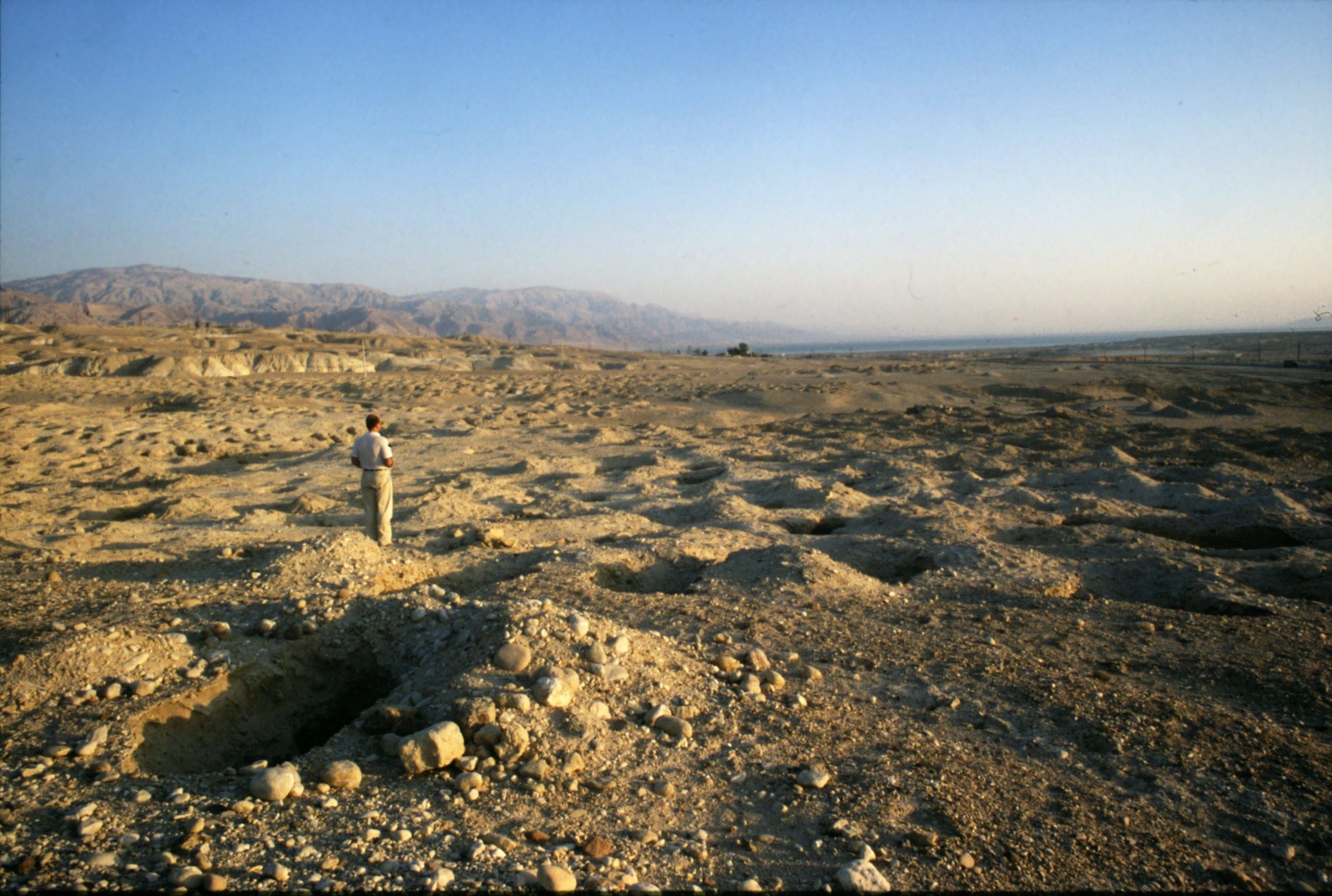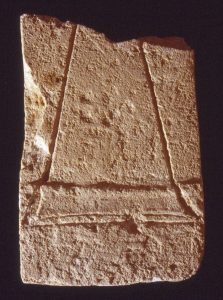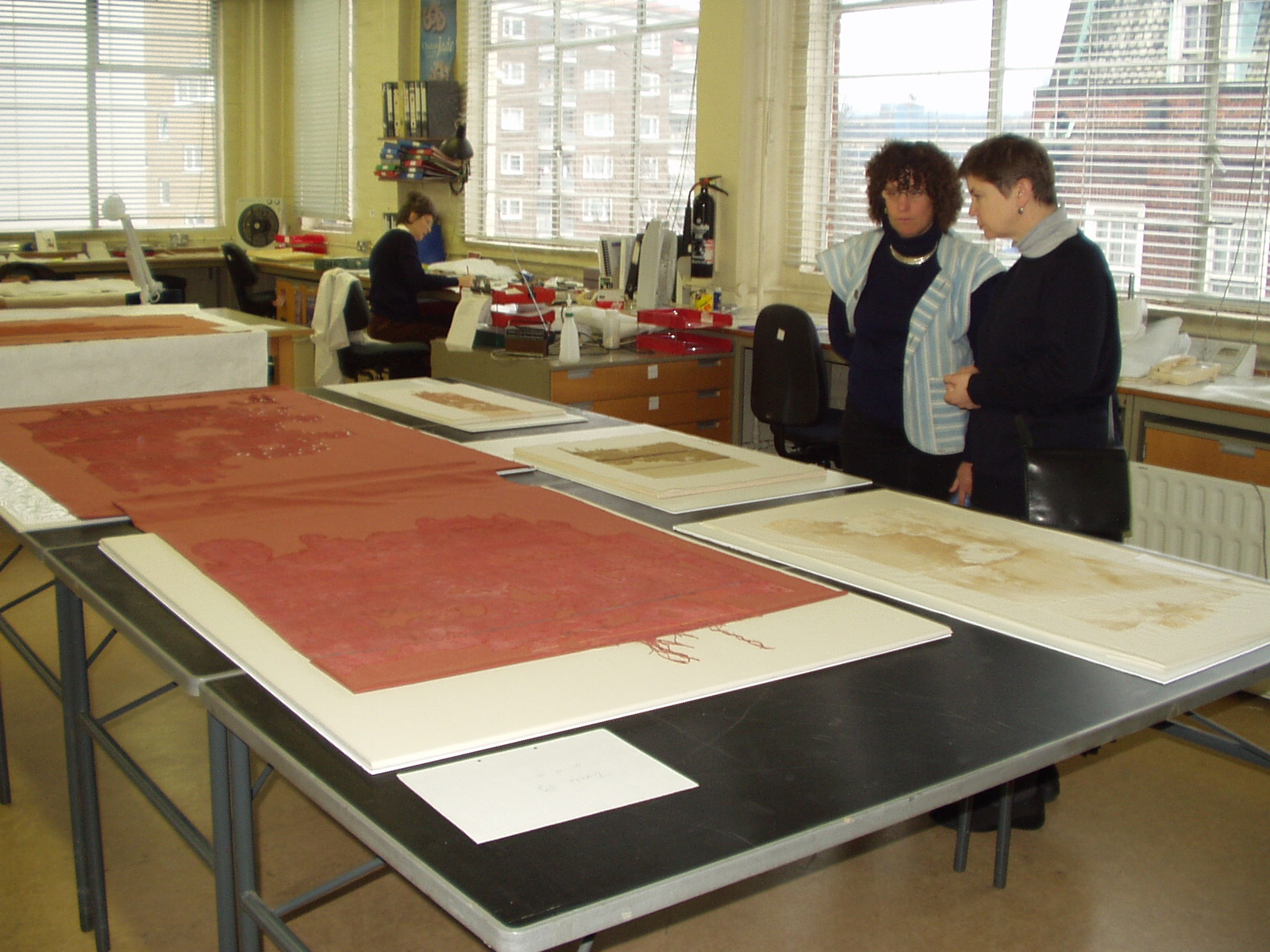Konstantinos D. Politis is an ACOR-CAORC Post-Doctoral Fellow and chairperson of the Hellenic Society for Near Eastern Studies. As part of his fellowship he will be giving a public presentation on his findings from archaeological fieldwork at Khirbet Qazone. In this blog, he provides a background to his work at this important Nabataean site. Dr. Politis will present a public lecture on this topic at ACOR on March 10, 2020.
Twice daily during the spring of 1996 our British Museum team would drive along the southern Dead Sea highway on the way to our excavation at Deir ‘Ain ‘Abata (Lot’s Cave Sanctuary) past the intersection of the Kerak road, only slightly slowing down mindful of the adjacent police post. We could have hardly suspected that precisely at this busy junction lay thousands of well-preserved two-thousand year-old burials. The nearby Early Bronze Age site of Bab edh-Drah, first identified in 1924, was well-known from archaeological excavations and surveys during the 1960s, 70s and 80s so we assumed records were made of the antiquities in the area. One day though, we noticed bulldozers widening the road and that locals were digging the surroundings and so we decided to stop and investigate for ourselves. What we discovered were human remains littered on the surface along with bits of clothing.
In the days that followed, we took time from our excavations to visit the place again and walked over several hundred square meters of abandoned agricultural lands now pitted with numerous deep holes revealing tombs. We took samples of pottery sherds and pieces of cloth to identify and date them.

Back at our dig house we had a better look at the pottery fragments that we had collected and concluded they were ancient and probably all from the Roman period. But what about the well-preserved textiles associated with the human body parts in equally good condition? A small sample of a textile was taken to the British Museum to show renowned textile expert, Hero Granger-Taylor. Her immediate response was “this is certainly ancient, most probably from the Roman period”. Granger-Taylor had studied and published textiles from Fayum in Egypt and Masada in Israel/Palestine, so her judgement was unquestionable.
Now having pottery and textile evidence dating to the Roman period, our discovery in Jordan took on a different dimension and became a matter of urgent rescue. So I took the decision as director of the Deir ‘Ain ‘Abata excavations to divert some of our time and expertise to further investigate the site which the locals called “khirbet Qazone” after the Armenian landowner, Haygason. Fortunately, we had a seasoned physical anthropologist, a surveyor, and experienced field archaeologists on our team. So in collaboration with the Department of Antiquities, we began rescue excavations which continued until 1997. The results were astonishing.
Over 3,500 shaft graves were counted, most of which had recently been robbed out. We were able to collect more dateable finds. Meanwhile, we also carefully excavated 22 burials providing definitive evidence for the cultural identity of those interred.
Each of the graves had a single burial and there was no evidence of re-interment. Most of the graves were dug about two meters into the natural soil, undercut to the east and covered by adobe brick slabs, a practice hitherto only known at Khirbet Qumran of Dead Sea Scrolls fame. But here women and children, as well as men were laid out with their heads at the south end of the grave. The dry and saline conditions of the soil in which they were buried allowed many of the bodies to be very well preserved. Some had leather and textile shrouds wrapped around them. The dozens of complete and semi-complete garments were an important discovery since they are usually found in a fragmentary condition. Thus, it was possible to distinguish them as Graeco-Roman style mantles, tunics and shawls made of wool, linen, and cotton. Only a few of these burials contained any grave goods, such as iron and copper bracelets, silver and gold earrings, beads, and there was one scarab. A wooden staff, sandals, and a wreath were also discovered in the tombs.


Five funerary stele were found from robbed-out tombs, four of which had engraved Nabataean betyls. One was inscribed in Greek, “Afseni the pretty one” (female). Papyri scroll inscribed in Greek found by tomb-robbers at the site mentioned Nabataean names and land-ownership and date to the 1st and 2nd centuries A.D. Similar scrolls discovered in the Cave of Letters on the western shore of the Dead Sea mention the port of Mahoza and the town of Mazra in the district of Zoara. Could these be the sites associated with Khirbet Qazone? It seemed very likely so!
The results of our rescue excavations were met with great interest in Jordan and abroad. Visitors flowed to the site, but its protection was ultimately not secured. So further fieldwork was deemed necessary to fully assess the site. Meanwhile, conservation of the textiles was conducted by the British Museum with several complete pieces being mounted for display.

By 2004 enough institutional support was acquired, including from the National Geographic Society and the British Academy, to conduct a third, and final season of excavations. A complete and detailed contour survey map was made locating the entire cemetery, now estimated as having approximately 5,000 burials. More typical deep shaft tombs were excavated but as work was extended northwards, a different burial type was revealed which was shallow and covered by large stone slabs. The pottery, beads and tombstones engraved with crosses associated with these graves indicated they belonged to Christians of the 4th century A.D. In 2015 a church adorned with ornate mosaic floors was discovered nearby, again accidentally by bulldozers. This was definitive evidence that the Nabataean community endured at Khirbet Qazone into the 6th century A.D., but now with a new faith.
Regional investigations have shown that similar period cemeteries and sites were situated at Deir ‘Ain ‘Abata, Ghor as-Safi, Khirbet Sekine, Haditha, Numeria, Feifa and Khanezirah. These all formed part of a population with a Nabataean character living on the south-eastern shores of the Dead Sea from the 1st-6th centuries A.D.
